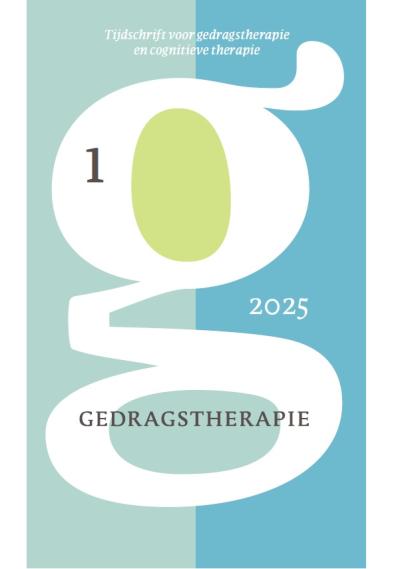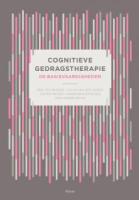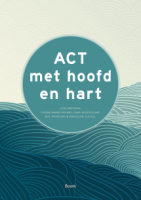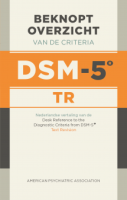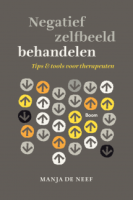Inhoud
Piekeren en lichamelijke gezondheid: een literatuuroverzicht
Samenvatting
In dit overzichtsartikel wordt beschreven welke invloed piekergedachten hebben op onze lichamelijke gezondheid. Volgens de Perseveratieve Cognitie Hypothese verklaren perseveratieve cognities, zoals piekeren, waarom mensen ziek kunnen worden van stress. Door te blijven piekeren over een stressvolle gebeurtenis wordt de stressrespons onnodig verlengd, wat bijdraagt aan de zogeheten ‘wear and tear' effecten van stress op het lichaam. We geven een overzicht van de onderzoeken naar de relatie tussen piekeren en organische ziekten, lichamelijke klachten en de verlenging van de fysiologische stressrespons. Over het geheel genomen ondersteunen de uitkomsten de Perseveratieve Cognitie Hypothese: langdurig piekeren kan de lichamelijke gezondheid bedreigen, en lijkt de effecten van stressvolle gebeurtenissen te mediëren. Dit zou ten dele ook de lichamelijke gezondheidsrisico's van psychopathologie (met name angststoornissen en depressie) verklaren Het aantal studies is echter wel nog beperkt en is vooral gericht op de ontwikkeling van hart- en vaatziekten.
Literatuur
- Backhaus, J., Junghanns, K., & Hohagen, F. (2004). Sleep disturbances are correlated with decreased morning awakening salivary cortisol. Psychoneuroendocrinology, 29, 1184-1191.
- Borkovec, T.D., & Hu, S. (1990). The effect of worry on cardiovascular response to phobic imagery. Behaviour Research and Therapy, 28, 69-73.
- Borkovec, T.D., Lyonfields, J.D., Wiser, S.L., & Deihl, L. (1993). The role of worrisome thinking in the suppression of cardiovascular response to phobic imagery. Behaviour Research and Therapy, 31, 321-324.
- Borkovec, T.D., Ray, W.J., & Stöber, J. (1998). Worry: A cognitive phenomenon intimately linked to affective, physiological, and interpersonal behavioral processes. Cognitive Therapy and Research, 22, 561-576.
- Broadbent, E., Petrie, K.J., Alley, P.G., & Booth, R.J. (2003). Psychological stress impairs early wound repair following surgery. Psychosomatic Medicine, 65, 865-869.
- Brosschot, J.F. (2002). Cognitive-emotional sensitization and somatic health complaints. Scandinavian Journal of Psychology, 43, 113-121.
- Brosschot, J.F., Gerin, W., & Thayer, J.F. (2006). The perseverative cognition hypothesis: A review of worry, prolonged stress-related physiological activation, and health. Journal of Psychosomatic Research, 60, 113-124.
- Brosschot, J.F., & Van Der Doef, M. (2006). Daily worrying and somatic health complaints: Testing the effectiveness of a simple worry reduction intervention. Psychology & Health, 21, 19-31.
- Brosschot, J.F., van Dijk, E., & Thayer, J.F. (2007). Daily worry is related to low heart rate variability during waking and the subsequent nocturnal sleep period. International Journal of Psychophysiology, 63, 39-47.
- Brosschot, J.F., Verkuil, B., & Thayer, J.F. (2010). Conscious and unconscious perseverative cognition: Is a large part of prolonged physiological activity due to unconscious stress? Journal of Psychosomatic Research, 69, 407-416.
- Brown, R.J. (2004). Psychological mechanisms of medically unexplained symptoms: An integrative conceptual model. Psychological Bulletin, 130, 793-812.
- Devoulyte, K.B.A., & Sullivan, M.J.L.P. (2003). Pain catastrophizing and symptom severity during upper respiratory tract illness. Clinical Journal of Pain, 19, 125-133.
- Dijkstra, A., & Brosschot, J. (2003). Worry about health in smoking behaviour change. Behaviour Research and Therapy, 41, 1081-1092.
- Eccleston, C., Crombez, G., Aldrich, S., & Stannard, C. (2001). Worry and chronic pain patients: A description and analysis of individual differences. European Journal of Pain, 5, 309-318.
- Eriksen, H.R., Svendsrod, R., Ursin, G., & Ursin, H. (1998). Prevalence or subjective health complaints in the Nordic European countries in 1993. European Journal of Public Health, 8, 294-298.
- Fortune, D.G., Richards, H.L., Kirby, B., McElhone, K., Markham, T., Rogers, S., et al. (2003). Psychological distress impairs clearance of psoriasis in patients treated with photochemotherapy. Archives of Dermatology, 139, 752-756.
- Girod, J.P., & Brotman, D.J. (2004). Does altered glucocorticoid homeostasis increase cardiovascular risk? Cardiovascular Research, 64, 217-226.
- Glynn, L.M., Christenfeld, N., & Gerin, W. (2002). The role of rumination in recovery from reactivity: Cardiovascular consequences of emotional states. Psychosomatic Medicine, 64, 714-726.
- Hay, J.L., Buckley, T.R., & Ostroff, J.S. (2005). The role of cancer worry in cancer screening: A theoretical and empirical review of the literature. Psycho-Oncology, 14, 517-534.
- Hazlett-Stevens, H., & Borkovec, T.D. (2001). Effects of worry and progressive relaxation on the reduction of fear in speech phobia: An investigation of situational exposure. Behavior Therapy, 32, 503-517.
- Hofmann, S.G., Moscovitch, D.A., Pizzagalli, D.A., Litz, B.T., Kim, H.J., & Davis, L.L. (2005). The worried mind: Autonomic and prefrontal activation during worrying. Emotion, 5, 464-475.
- Holman, E.A., Silver, R.C., Poulin, M., Andersen, J., Gil-Rivas, V., & McIntosh, D.N. (2008). Terrorism, acute stress, and cardiovascular health: A 3-year national study following the September 11th attacks. Archives of general psychiatry, 65, 73.
- Jellesma, F.C., Verkuil, B., & Brosschot, J.F. (2009). Postponing worrisome thoughts in children: The effects of a postponement intervention on perseverative thoughts, emotions and somatic complaints. Social Science & Medicine, 69, 160-164.
- Kubzansky, L.D., Kawachi, I., Spiro, A., III, Weiss, S.T., Vokonas, P.S., & Sparrow, D. (1997). Is worrying bad for your heart?: A prospective study of worry and coronary heart disease in the normative aging study. Circulation, 95, 818-824.
- Lazarus, R.S. (2000). Toward better research on stress and coping. American Psychologist, 55, 665-673.
- Lyonfields, J.D., Borkovec, T.D., & Thayer, J.F. (1995). Vagal tone in generalized anxiety dis order and the effects of aversive imagery and worrisome thinking. Behavior Therapy, 26, 457-466.
- McCullough, M.E., Orsulak, P., Brandon, A., & Akers, L. (2007). Rumination, fear, and cortisol: An in vivo study of interpersonal transgressions. Health Psychology, 26, 126-132.
- Melamed, S., Shirom, A., Toker, S., Berliner, S., & Shapira, I. (2006). Burnout and risk of cardiovascular disease: Evidence, possible causal paths, and promising research directions. Psychological Bulletin, 132, 327-353.
- Newman, M.G., & Llera, S.J. (2011). A novel theory of experiential avoidance in generalized anxiety disorder: A review and synthesis of research supporting a contrast avoidance model of worry. Clinical Psychology Review, 31, 371-82.
- Petrie, K.J., Broadbent, E.A., Kley, N., Moss-Morris, R., Horne, R., & Rief, W. (2005). Worries about modernity predict symptom complaints after environmental pesticide spraying. Psychosomatic Medicine, 67, 778-782.
- Petrie, K.J., Sivertsen, B., Hysing, M., Broadbent, E., Moss-Morris, R., Eriksen, H. R., et al. (2001). Thoroughly modern worries: The relationship of worries about modernity to reported symptoms, health and medical care utilization. Journal of Psychosomatic Research, 51, 395-401.
- Pieper, S., & Brosschot, J.F. (2005). Prolonged stress-related cardiovascular activation: Is there any? Annals of Behavioral Medicine, 30, 91-103.
- Pieper, S., Brosschot, J.F., Leeden, R. van der, & Thayer, J.F. (2007). Cardiac effects of momentary assessed worry episodes and stressful events. Psychosomatic Medicine, 69, 901-909.
- Rydstedt, L.W., Cropley, M., Devereux, J.J., & Michalianou, G. (2009). The effects of gender, long-term need for recovery and trait inhibition-rumination on morning and evening saliva cortisol secretion. Anxiety, Stress & Coping: An International Journal, 22, 465-474.
- Schlotz, W.M., Hellhammer, J.M., Schulz, P.P., & Stone, A.A.P. (2004). Perceived work over load and chronic worrying predict weekend-weekday differences in the cortisol awakening response. Psychosomatic Medicine, 66, 207-214.
- Segerstrom, S.C., Glover, D.A., Craske, M.G., & Fahey, J.L. (1999). Worry affects the immune response to phobic fear. Brain Behavior and Immunity, 13, 80-92.
- Segerstrom, S.C., Solomon, G.F., Kemeny, M.E., & Fahey, J.L. (1998). Relationship of worry to immune sequelae of the Northridge earthquake. Journal of Behavioral Medicine, 21, 433-450.
- Suls, J., & Bunde, J. (2005). Anger, anxiety, and depression as risk factors for cardiovascular disease: The problems and implications of overlapping affective dispositions. Psychological Bulletin, 131, 260-300.
- Thomsen, D.K., Hokland, M., Zachariae, R., Viidik, A., Mehlsen, M.Y., Olesen, F., et al. (2004). Is there an association between rumination and self-reported physical health? A one-year follow-up in a young and an elderly sample. Journal of Behavioral Medicine, 27, 215-231.
- Verkuil, B., Brosschot, J.F., Borkovec, T.D., & Thayer, J.F. (2009). Acute autonomic effects of experimental worry and cognitive problem solving: Why worry about worry? International Journal of Clinical and Health Psychology, 9, 439-453.
- Verkuil, B., Brosschot, J.F., Gebhardt, W.A., & Thayer, J.F. (2010). When worries make you sick: A review of perseverative cognition, the default stress response and somatic health. Journal of Experimental Psychopathology, 1, 87-118.
- Verkuil, B., Brosschot, J.F., Korrelboom, K., Reul-Verlaan, R., & Thayer, J.F. (2011). Pretreatment of worry enhances the effects of stress management therapy: A randomized clinical trial. Psychotherapy and Psychosomatics, 80, 189-190.
- Verkuil, B., Brosschot, J.F., Meerman, E.E., & Thayer, J.F. (in press). Effects of momentary assessed stressful events and worry episodes on somatic health complaints. Psychology and Health.
- Verkuil, B., Brosschot, J.F., & Thayer, J.F. (2007a). A sensitive body or a sensitive mind? Associations among somatic sensitization, cognitive sensitization, health worry, and subjective health complaints. Journal of Psychosomatic Research, 63, 673-681.
- Verkuil, B., Brosschot, J.F., & Thayer, J.F. (2007b). Capturing worry in daily life: Are trait questionnaires sufficient? Behaviour Research and Therapy, 45, 1835-1844.
- Yoshino, K., & Matsuoka, K. (2009). Effect of mood during daily life on autonomic nervous activity balance during subsequent sleep. Autonomic Neuroscience, 150(1-2), 147-149.
- Yusuf, S., Hawken, S., Ôunpuu, S., Dans, T., Avezum, A., Lanas, F., et al. (2004). Effect of potentially modifiable risk factors associated with myocardial infarction in 52 countries (the INTERHEART study): Cse-control study. The Lancet, 364(9438), 937-952.
- Zoccola, P.M., Dickerson, S.S., & Zaldivar, F.P. (2008). Rumination and cortisol responses to laboratory stressors. Psychosomatic Medicine, 70, 661-667.
 © 2009-2025 Uitgeverij Boom Amsterdam
© 2009-2025 Uitgeverij Boom Amsterdam
De artikelen uit de (online)tijdschriften van Uitgeverij Boom zijn auteursrechtelijk beschermd. U kunt er natuurlijk uit citeren (voorzien van een bronvermelding) maar voor reproductie in welke vorm dan ook moet toestemming aan de uitgever worden gevraagd:
Behoudens de in of krachtens de Auteurswet van 1912 gestelde uitzonderingen mag niets uit deze uitgave worden verveelvoudigd, opgeslagen in een geautomatiseerd gegevensbestand, of openbaar gemaakt, in enige vorm of op enige wijze, hetzij elektronisch, mechanisch door fotokopieën, opnamen of enig andere manier, zonder voorafgaande schriftelijke toestemming van de uitgever.
Voor zover het maken van kopieën uit deze uitgave is toegestaan op grond van artikelen 16h t/m 16m Auteurswet 1912 jo. Besluit van 27 november 2002, Stb 575, dient men de daarvoor wettelijk verschuldigde vergoeding te voldoen aan de Stichting Reprorecht te Hoofddorp (postbus 3060, 2130 KB, www.reprorecht.nl) of contact op te nemen met de uitgever voor het treffen van een rechtstreekse regeling in de zin van art. 16l, vijfde lid, Auteurswet 1912.
Voor het overnemen van gedeelte(n) uit deze uitgave in bloemlezingen, readers en andere compilatiewerken (artikel 16, Auteurswet 1912) kan men zich wenden tot de Stichting PRO (Stichting Publicatie- en Reproductierechten, postbus 3060, 2130 KB Hoofddorp, www.cedar.nl/pro).
No part of this book may be reproduced in any way whatsoever without the written permission of the publisher.
Inloggen VGCt en VVGT
Leden van de VGCt en de VVGT loggen in via de site van hun vereniging. Als u op die site bent ingelogd als lid, vindt u daar een button naar het Tijdschrift voor Gedragstherapie.
English
Behavioral Therapy: Journal for Behavioral Therapy and Cognitive Therapy ISSN 0167-7454
Information in English can be found here.



